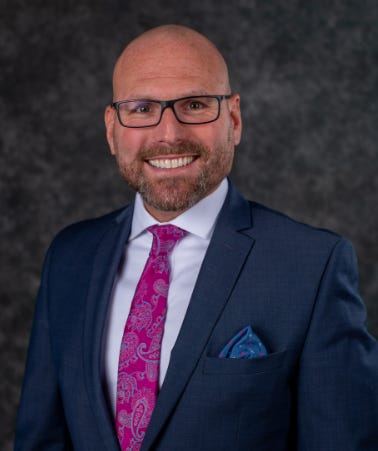When Ben Kaplan sits at KCCI’s anchor desk sometime soon, the newly-hired anchor will be stepping into a role that’s been open about seven months. Steve Karlin retired back in March. Since then, Stacey Horst has been capably anchoring main weekday newscasts largely by herself.
What’s taken so long? Karlin announced his retirement in November of last year. Station managers likely knew of his plans well before that.
Hiring a TV news anchor these days is not easy. It’s a complicated process that can take a lot of time.
I spent 30 years hiring anchors, reporters and other news staff. There’s a lot to consider before inviting someone to join your newsroom.
TV news applicants not only submit a paper resume, but also a “reel” of their work. The resume reel is a critical part of choosing who will be a finalist. The reel opens with a montage of shots of the applicant anchoring or reporting from the field. (Want to see examples? Search YouTube for “TV news anchor reels”.)
I’d look at each reel and make some basic judgments. Are their stories factual and clear? Do they write to video or are they just writing a radio script with unrelated pictures edited over their narration? How does the person look, and perhaps more important, how do they sound? Is their vocal delivery professional? Is the voice quality pleasant, or like nails on a chalkboard? Do they seem credible? Do they seem comfortable and likeable? How are they at live shots? At breaking news?
Applicants got divided into a yes pile and no pile. Then I’d call applicants for an initial phone interview. If things went well, I’d develop a list of finalists and have each one come to town at station expense for an in-person interview.
I never hired anyone sight unseen. These days, I hear from young journalists that stations only offer a job interview over Zoom. I never hired anyone that I hadn’t looked in the eye and spent the day with. You can learn a lot taking a job applicant to lunch. Are they curious? Can they carry on a conversation beyond the formal job interview? How do they treat the restaurant staff? Are they comfortable in their own skin? If so, they’ll probably be comfortable for our viewers to watch.
Then I’d hit the phones to check references. You’d be amazed what you find out during reference calls. One person I called for a reference on an anchor I was close to hiring said, “He listed ME as a reference? Funny, he never asked me! I can’t stand that guy because he’s a jerk to everyone in the newsroom!” Lesson for job applicants: Always check your references to make sure you have their permission AND that they’ll give you a good reference! I hired someone else.
A three-legged stool
With a main anchor position like the one that’s been open at KCCI, it gets even more involved. The anchor candidate is flown in to record auditions with co-anchors. A news director like me is only part of the decision-process. The station general manager also weighs in, as does the corporate team. I called it the three-legged stool. Any one of us had veto power over a hiring decision. Usually, we’d easily agree because the best candidate rose to the top.
On occasion, I couldn’t find the right person during a job search. Another option is to go to a head-hunter and look at reel after reel of anchors from all over the country. My boss and I would fly to San Francisco or Dallas and spend an entire day looking at hundreds of anchor reels. At the end of the day, after looking at hundreds of anchormen and anchorwomen, I didn’t know what I liked anymore. I was overwhelmed. But we did find some good anchors that way, and some wonderful people who made for excellent workmates.
Looking for “onecasters”
Judging an anchor is highly subjective. The person I think is great might drive you up the wall. I learned a few things over the years. One, I would check the eyes. Do they have that dull anchor stare while reading the teleprompter or are their eyes lively and engaged with the meaning of the story?
Secondly, I looked for “onecasters”. Our business is called broadcasting – a person “casting” the message broadly to a lot of people, like a speaker in an auditorium. But I preferred onecasters, a word I made up to describe anchors who understand that even though they are talking to thousands of people, they’re really talking to one viewer sitting in the living room. It makes a difference. Instead of shouting, you speak more intimately. Instead of being “on stage”, you relax and have a conversation.
After the arduous hiring process, the work is only beginning. When bringing in a new person from outside Iowa, I worked to get them up to speed on local newsmakers and issues. And nothing ruins credibility like the new anchor mispronouncing Nevada, Madrid or Nishnabotna.
So, seven months without a main co-anchor seems like a long time to go until you realize all that goes into hiring at that level. I wish nothing but the best for Ben Kaplan. Just don’t mispronounce uh-TUM-wuh.
Please check out others in the Iowa Writers’ Collaborative:





Having begun my 22 year career in TV news at KTVO-TV in "uh-TUM-wah".....I heartily agree.
Thanks for another informative behind the scenes article. I always thought anchors just read stuff others wrote for them.
How they treat restaurant staff (and others) would be a key indicator of how they are as humans. I like that you paid attention to that.